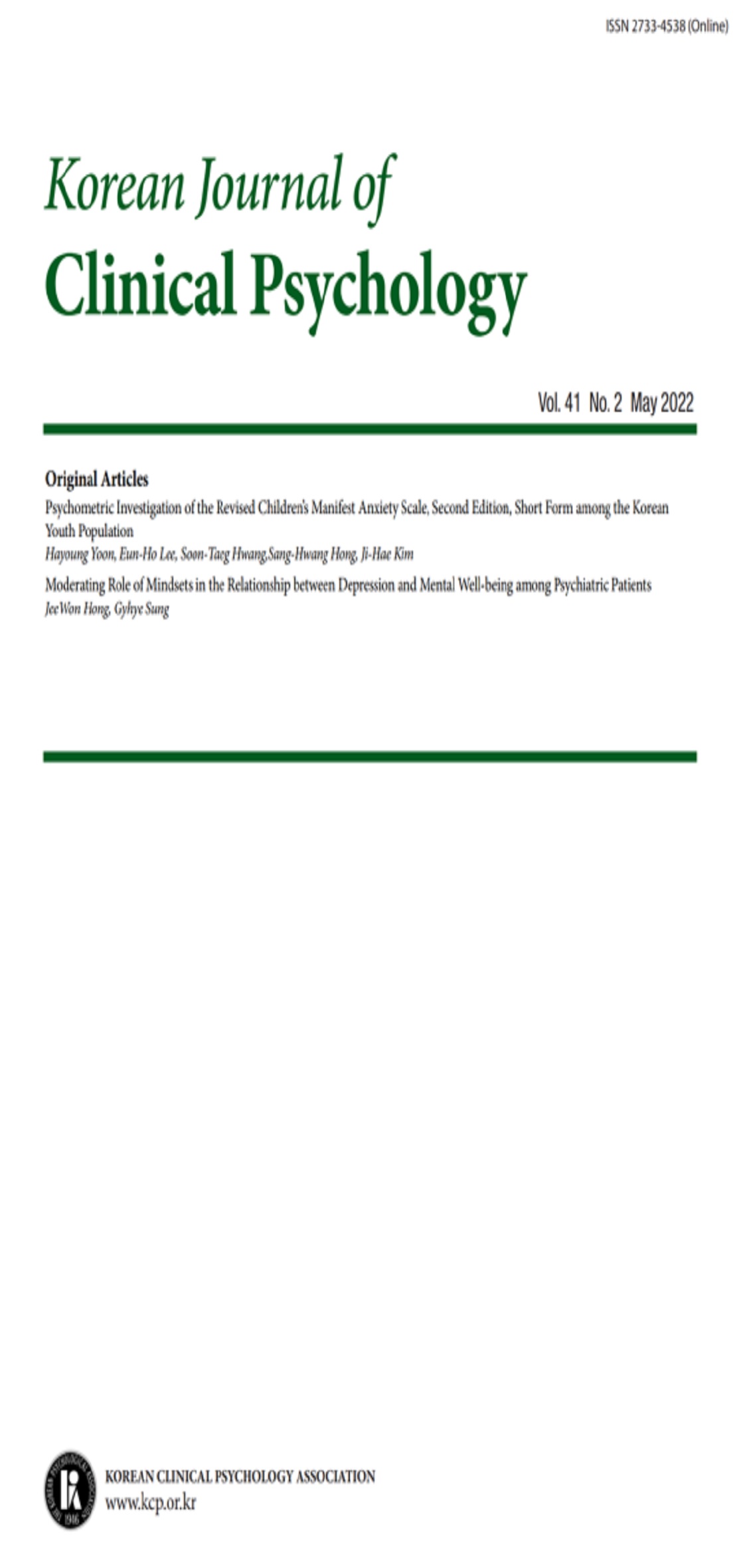open access
메뉴
open access
메뉴 E-ISSN : 2733-4538
E-ISSN : 2733-4538
본 연구는 외상후 스트레스 장애(Posttraumatic Stress Disorder: 이하 PTSD)의 발병률과 운전/승차 행동의 변화 및 PTSD 증상에 영향을 주는 심리사회적 변인들을 밝히고자 하였다. 동일 버스사고를 경험한 대학생 피해자 47명을 대상으로 교통사고 면접지, 임상가용 PTSD 척도, 사건 충격 척도, Beck 우울 척도, 상태-특성 불안 척도, 상태-특성 분노 척도, 대처 방식 척도, 요약된 신체손상 척도, 사회적 지지 척도를 실시하였다. 그 결과는 다음과 같다. 첫째, 버스사고 피해자들의 PTSD 발병률은 27.7%이었고, 부분적으로 PTSD 증상을 경험하는 사례는 38.3%이었다. 이들 중 PTSD와 부분 PTSD로 분류된 피해자들은 정상으로 분류된 피해자들보다 유의하게 더 심한 승차 회피 행동을 나타냈다. 둘째, PTSD로 분류된 피해자들은 정상으로 분류된 피해자들보다 이전에 교통사고 경험이 유의하게 더 많았으며, 사고 당시에 지각된 위험성이 유의하게 높았다. 셋째, PTSD와 부분 PTSD로 분류된 피해자들은 정상으로 분류된 피해자들보다 유의하게 우울, 불안 및 태만 죄책감, 비현실감, 자각감소 증상을 더 심하게 나타냈다. 넷째, PTSD와 부분 PTSD로 분류된 피해자들은 정상으로 분류된 피해자들보다 유의하게 현재 기능을 더 낮게 평가 하였으며, 소극적 대처를 더 많이 사용하고 있었다. PTSD로 분류된 피해자들은 정상으로 분류된 피해자들에 비해 승차 시 취약성이 더 심하였고, 회복 가능성도 더 낮게 평가 하였다. 이러한 결과들을 토대로 PTSD와 부분 PTSD로 분류된 피해자들에게 신속한 치료적 개입의 필요성이 시사되었다. 연구의 제한점과 인지-행동 치료적 시사점들이 논의되었다.
The aims of this study were to investigate the incidence of posttraumatic stress disorder(PTSD), effects of accident on driving/riding behavior, to identify psychosocial risk factors affecting the severity of PTSD symptoms. Motor Vehicle Accident Interview, Clinician Administrated PTSD Scale, Impact of Event Scale, Beck Depression Inventory, State-Trait Anxiety Scale, State-Trait Anger Scale, The Ways of Coping Checklist, Abbreviated Physical Injury Scale and Social Support Scale were administered to 47 undergraduates victims who experienced the same bus accident. The major results of study were as follows. First, the incidence of full PTSD and subsyndromal PTSD were 27.7% and 38.3%. The victims who were classified as full and subsydromal PTSD showed significantly severe riding avoidant behaviors than victims who were classified as normal. Second, the victims who were classified as full PTSD and subsyndromal PTSD were significantly more likely to have experienced a prior moto vehicle accident, to have perceived severer danger feeling during the accident than victims who were classified as normal. Third, the victims who were classified as full and subsyndromal PTSD showed significantly severer depression, anxiety and negligent guilt, derealization and decrease of awareness than victims who were classified as normal. Forth, the victims who were classified as full and subsyndromal PTSD were significantly evaluated lower possibility of returning to pre-accident functioning and to have used more passive coping mechanism than victims who were classified as normal. And the victims who were classified as full PTSD showed significantly lower present functioning and severe riding vulnerability than victims who were classified as normal, these results suggested to need quick therapeutic intervention for the victims who were classified as full and subsyndromal PTSD. The limitation of this study and cognitive-behavioral psychotherapeutic implications were discussed.
